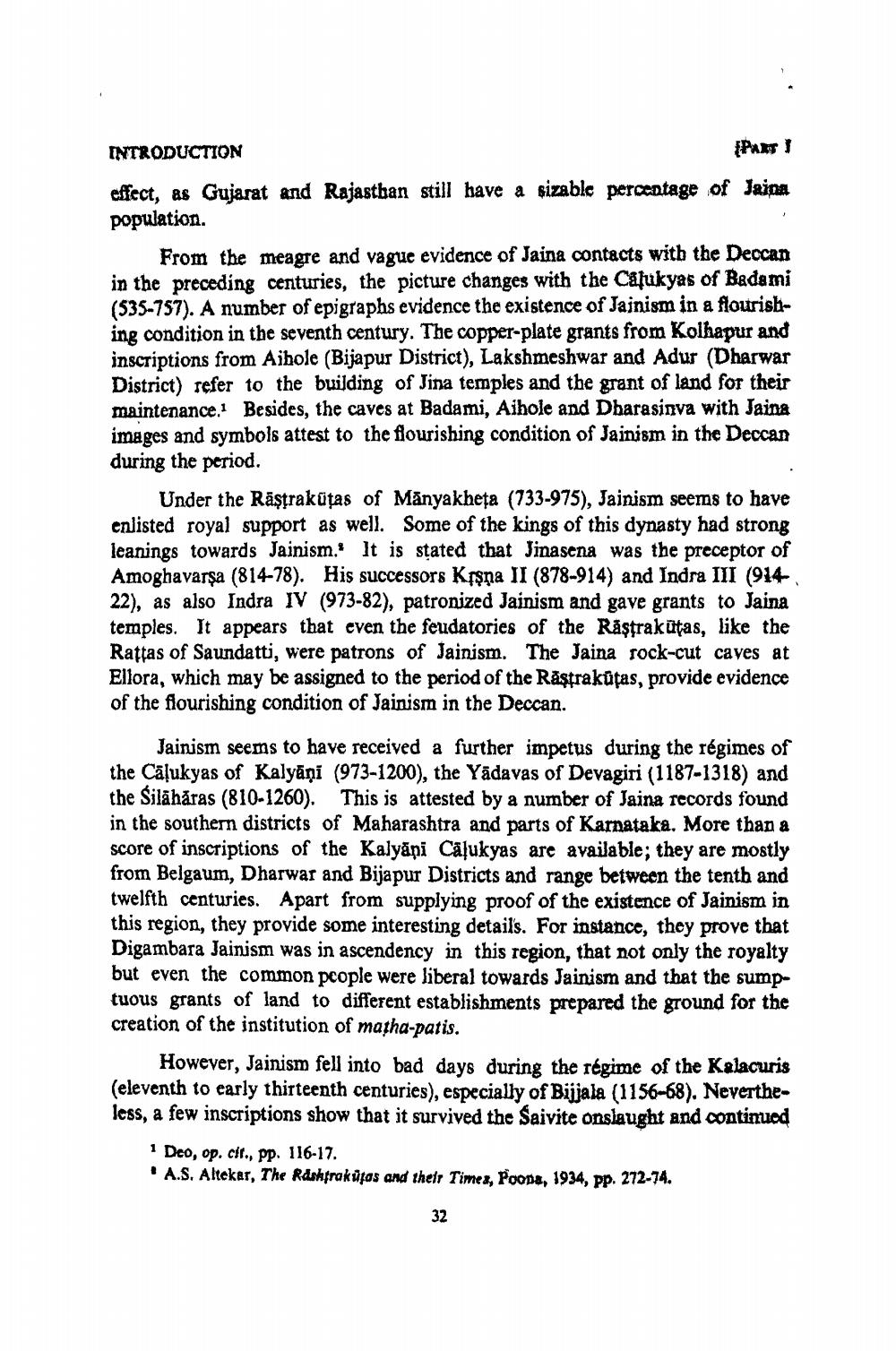________________
INTRODUCTION
{PART I effect, as Gujarat and Rajasthan still have a sizable percentage of Jaina population.
From the meagre and vague evidence of Jaina contacts with the Deccan in the preceding centuries, the picture changes with the Calukyas of Badami (535-757). A number of epigraphs evidence the existence of Jainism in a flourishing condition in the seventh century. The copper-plate grants from Kolhapur and inscriptions from Aihole (Bijapur District), Lakshmeshwar and Adur (Dharwar District) refer to the building of Jina temples and the grant of land for their maintenance. Besides, the caves at Badami, Aihole and Dharasinva with Jaina images and symbols attest to the flourishing condition of Jainism in the Deccan during the period.
Under the Răştrakutas of Manyakheta (733-975), Jainism seems to have enlisted royal support as well. Some of the kings of this dynasty had strong leanings towards Jainism. It is stated that Jinasena was the preceptor of Amoghavarsa (814-78). His successors Kṛṣṇa II (878-914) and Indra III (91422), as also Indra IV (973-82), patronized Jainism and gave grants to Jaina temples. It appears that even the feudatories of the Răştrakutas, like the Rattas of Saundatti, were patrons of Jainism. The Jaina rock-cut caves at Ellora, which may be assigned to the period of the Rastrakūtas, provide evidence of the flourishing condition of Jainism in the Deccan.
Jainism seems to have received a further impetus during the régimes of the Calukyas of Kalyāņi (973-1200), the Yadavas of Devagiri (1187-1318) and the Silāhāras (810-1260). This is attested by a number of Jaina records found in the southern districts of Maharashtra and parts of Karnataka. More than a score of inscriptions of the Kalyani Calukyas are available; they are mostly from Belgaum, Dharwar and Bijapur Districts and range between the tenth and twelfth centuries. Apart from supplying proof of the existence of Jainism in this region, they provide some interesting details. For instance, they prove that Digambara Jainism was in ascendency in this region, that not only the royalty but even the common people were liberal towards Jainism and that the sumptuous grants of land to different establishments prepared the ground for the creation of the institution of matha-patis.
However, Jainism fell into bad days during the régime of the Kalacuris (eleventh to early thirteenth centuries), especially of Bijjala (1156-68). Nevertheless, a few inscriptions show that it survived the Saivite onslaught and continued
1 Deo, op. cit., pp. 116-17.
A.S. Altekar, The Rashtrakutas and their Times, Poons, 1934, pp. 272-74.
32




